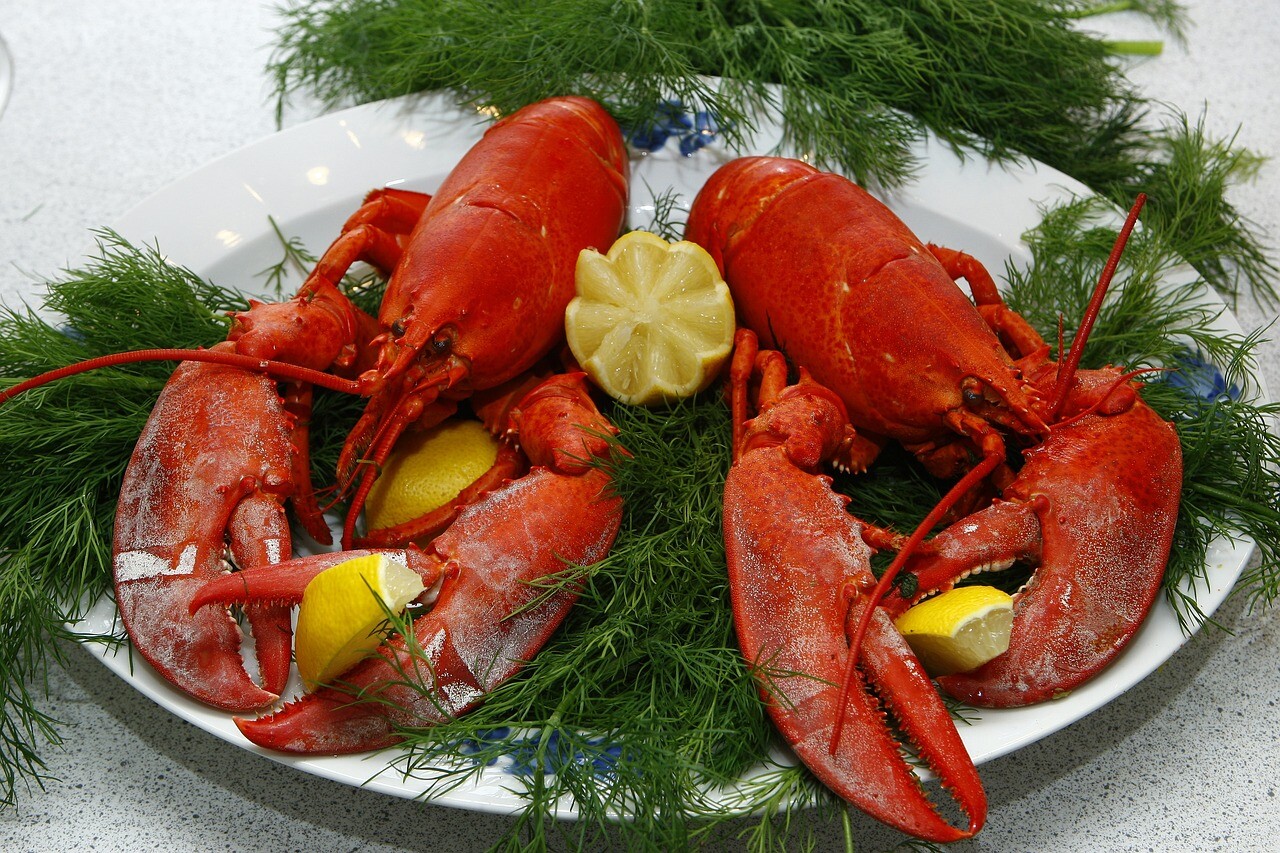The Lobster's Journey From Servant Food To Culinary Royalty

The intersection of taste and value when it comes to food is a funny thing. If you look at it in the most simplistic terms, you’d think that the most expensive food is automatically the kind that tastes the best. This is, of course, not the case, as anyone who’s had a seven dollar Popeyes chicken sandwich versus a sixteen dollar charcoal-infused cold-press green juice that tastes like swamp drainage can tell you. There’s a million variables that our taste buds will never even know exist that twist and affect the cost of food. I mean, in terms of immediate, pure joy, is a single oyster really better than a Twix bar? There’s one food in particular that, through history, has spent time both on finest china and prison trays, experiencing maybe the greatest glow-up in culinary history. I’m talking, of course, about that delicious red bug: the lobster.
As you might have already unwillingly heard from your fun fact loving friend during a lull in conversation, lobster’s silver platter status was only recently acquired. For a long time in American history, lobster meat was down there with boot-leather soup in terms of culinary cachet. It was a food for fish, felons, and worms, instead of Cape Cod wedding anniversaries. The actual climb to prestige, though, is sometimes glossed over, or just dismissed as a master plan to manipulate the market by some secret seafood Shelluminati conglomerate. Some of it may just be a change in attitude, but there are concrete reasons for the evolution as well. So let’s look at what exactly tossed this succulent little nightmare into the realm of the hoity-toity–a combination of things, including availability, advancements in cooking technique, and yes, a little bit of good marketing.

We’ll start at the bottom, when lobsters were not only plentiful, but a borderline nuisance. A commonly related fact is from when European colonists first arrived in the Americas, referencing lobsters washing up on the beach with the prevalence of modern microplastics. Colonists talked about two-foot high piles of the clacking crustaceans independently washing ashore, something that at modern market prices would be like coming home to find your above-ground pool full of pure uncut crude oil. As you might expect, nobody at the time was looking at what was basically living breathing beach litter as a top-dollar delicacy. Native Americans used them as fishing bait, only actually eating the critters themselves when they failed to catch any fish, which is pretty much an exact reversal of the pricing structure of any seafood restaurant menu nowadays.
Don't Miss
Because of the sheer amount of lobster meat throwing itself literally into the laps of colonists, it also started to become a popular cheap meat for prisoners and slaves. Nowadays, if you’re eating lobster in jail, it’s probably as a last meal while they’re polishing your seat on the old lethal La-Z-Boy. Servants actually got so sick of the stuff that they’d add sections to their contracts that they wouldn’t have to eat lobster more than a few times a week. Even with them basically force-feeding it to anyone they didn’t feel like buying meat for, there was still a massive surplus of lobster bits, so in 1836 they decided to start canning it and sending it west. Tons and tons of lobster meat was processed into full pallets of little metal-encased poverty meals and shipped out to the hungry and poor landlubbers of the midwest.

Now that all of America was aware of the tasty bugs, the lobster’s slow claw to the top of the menu started in earnest, around the 1880s. Train travel was exploding, and midwest dwellers were coming east curious about this weird shelled meat that kept showing up in their dinner cans. They’d had the world’s worst version, but wanted to try the real deal while on their trips, and didn’t know that east-coasters basically considered it something you’d eat out of a dumpster. The demand incentivized chefs to dress the old bug up a little, while at the same time, lobsters were starting to get a whole lot harder to find, and generally smaller, thanks to the amount of them that were feeding basically the entire low-class workforce. Weirdly, something that was once plentiful in the new world was basically wiped out! The colonists never do that!
It was while chefs were experimenting with making lobster a respectable meal that they stumbled on one of the biggest developments in how to murder a lobster for maximum flavor: the macabre method of cooking them while still alive. Up until then, lobsters were cooked the way most meat was: after being killed. And why wouldn’t they? It wasn’t like bison meat was tastier if you chased one screaming into an oven. Lobster meat, though, does have some unique properties that make cooking them alive much more palatable. The digestive system of a lobster almost immediately starts to go to work on its own corpse after death, and even if the meat isn’t spoiled in the sense of medical danger, it will rapidly become mushy and unpleasant, much faster than a traditional meat or fish would. Basically, right as they started to present lobster as an actual delicacy, they figured out they’d been cooking wrong, and that it was actually pretty damn good.

With the popularity of lobster now taking off at the same time as the population had naturally been dwindling, supply and demand took over and started sending prices skyrocketing. So, what might have seemed just like a strange class-based tug-of-war over crustacean meat, or a particularly shrewd campaign of lobster PR, was mostly a combination of two of life’s truths: everyone wants what they can’t have, and the free market is all too happy to charge them for it.